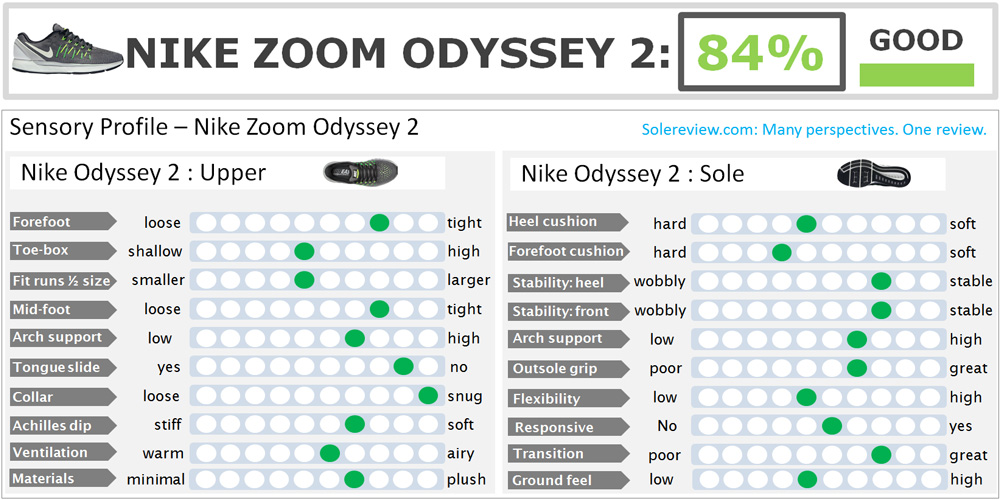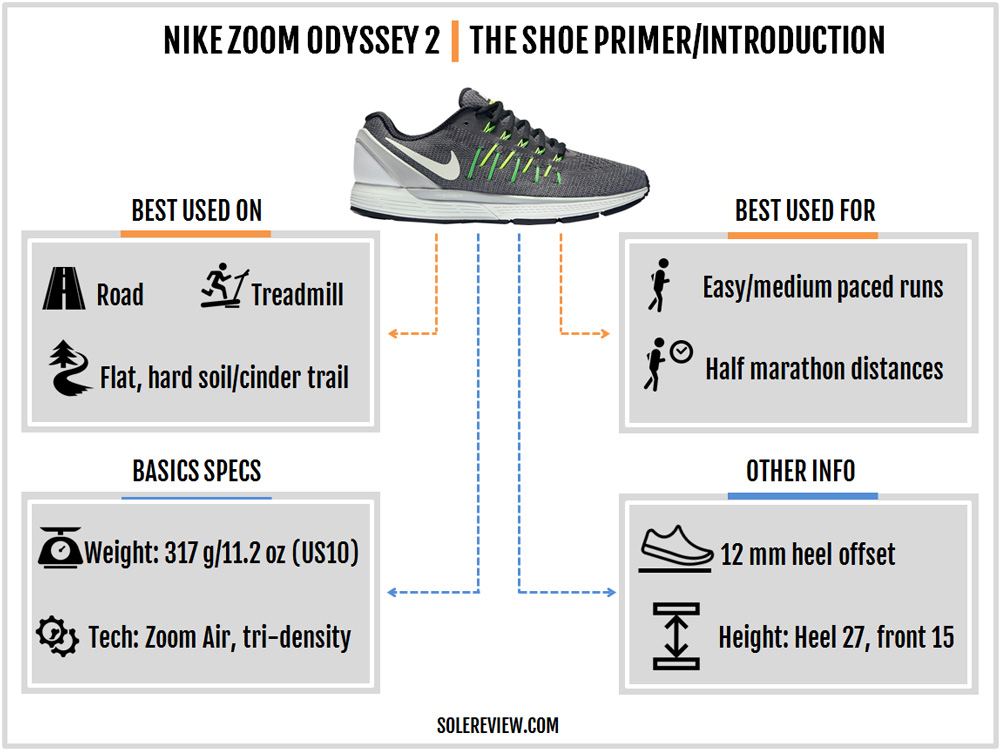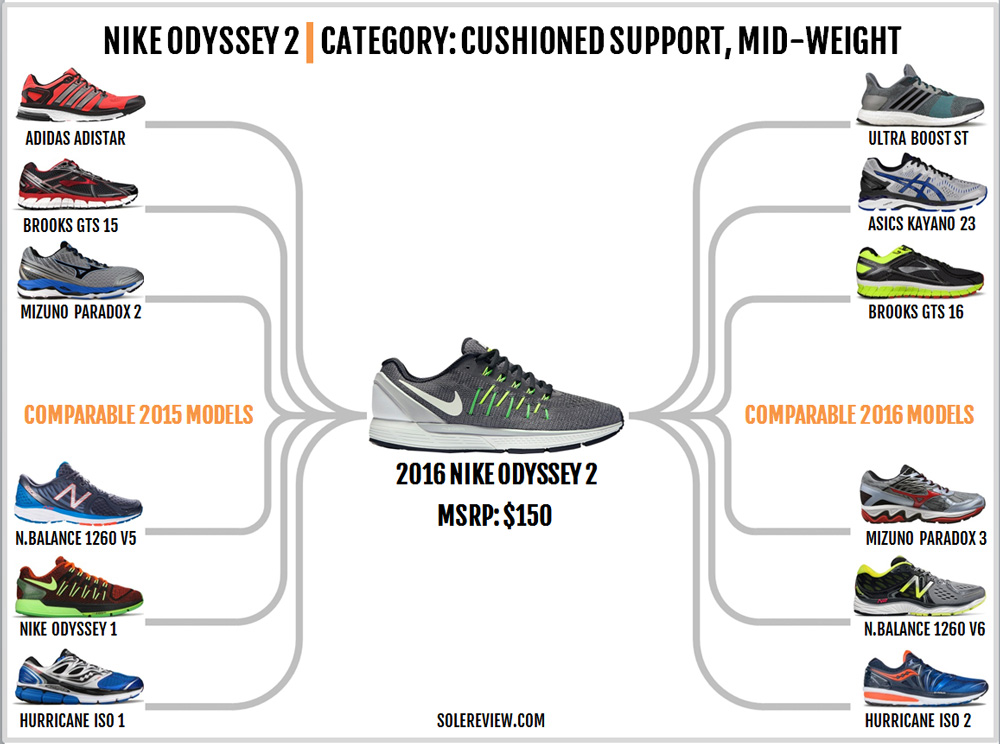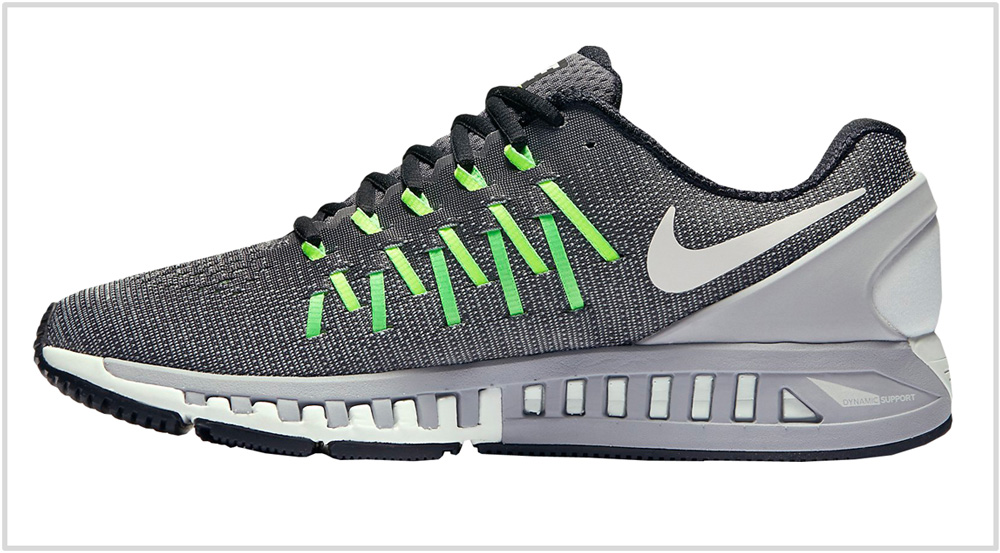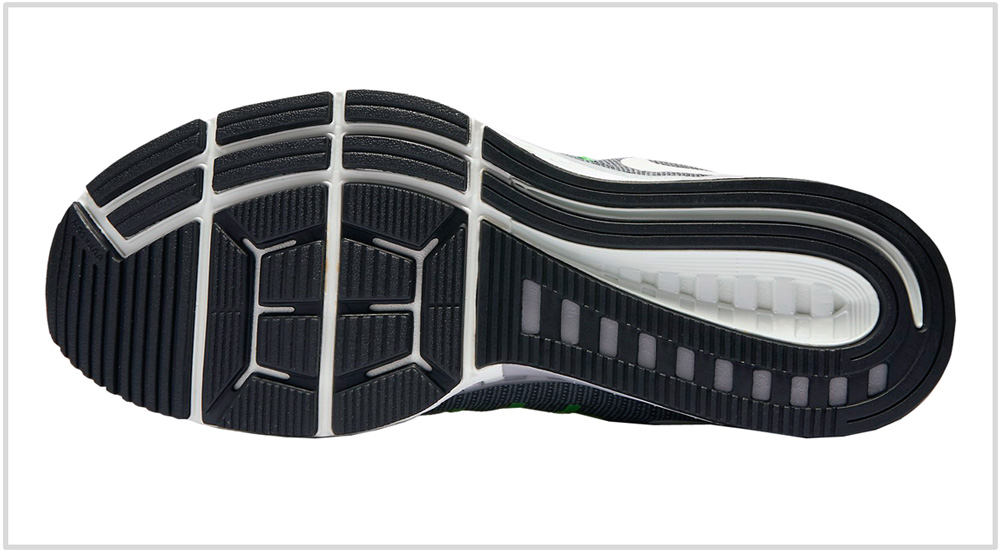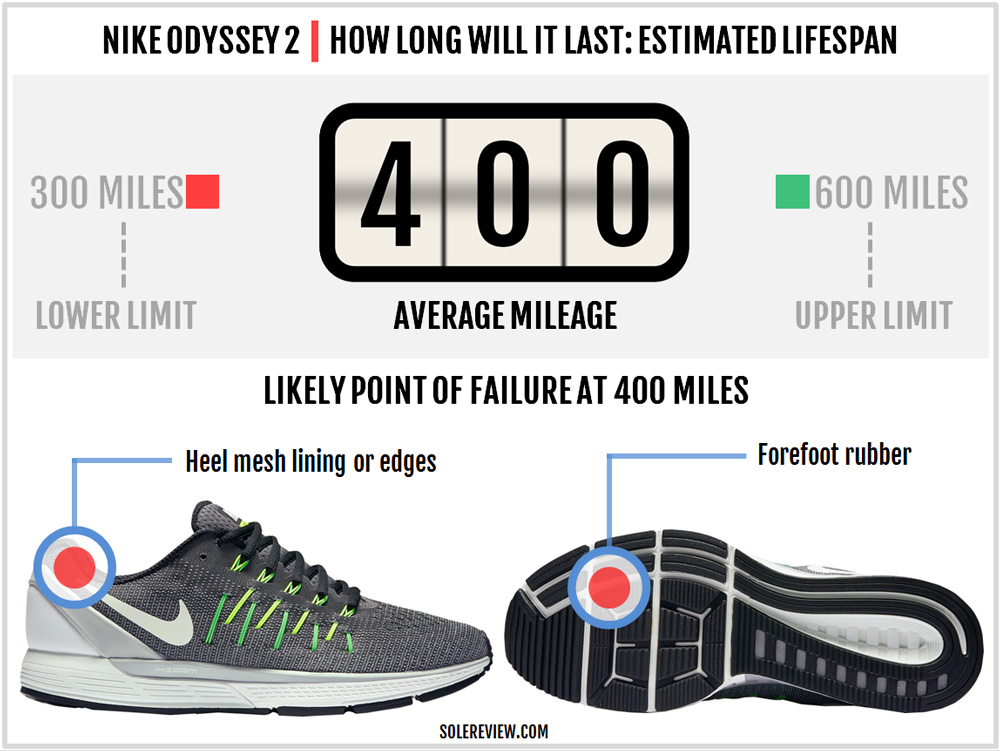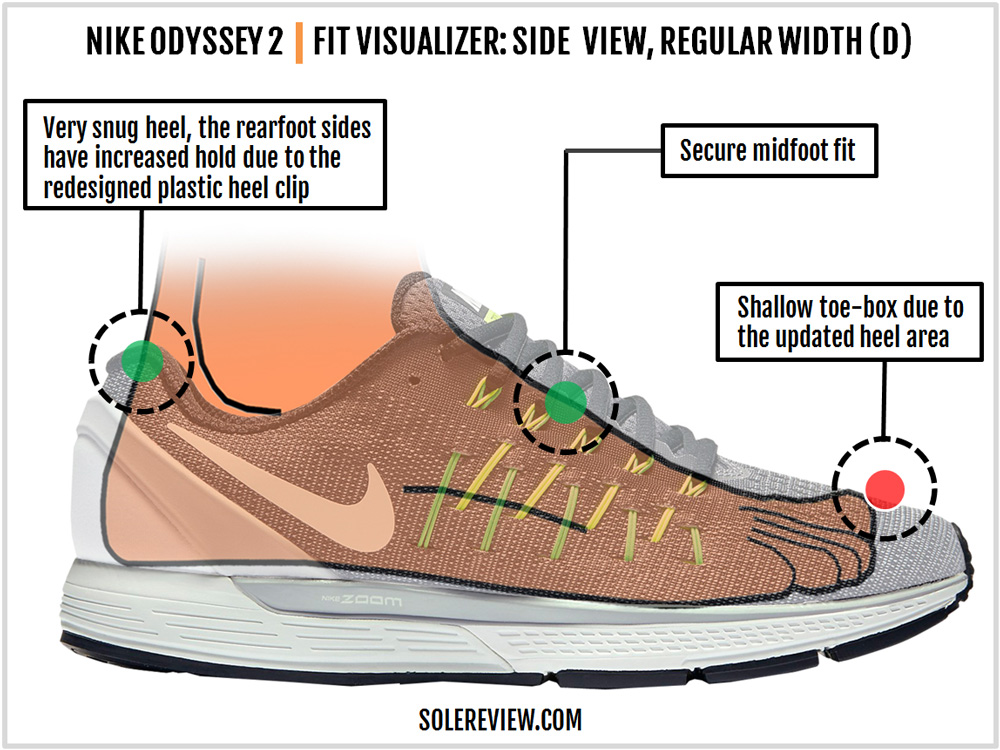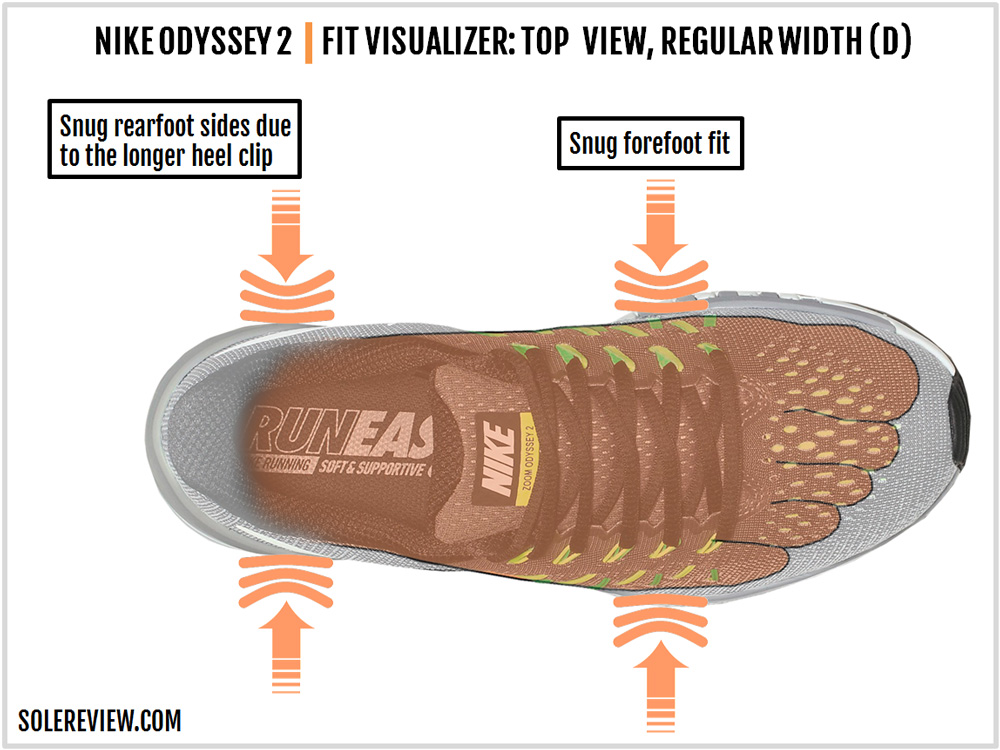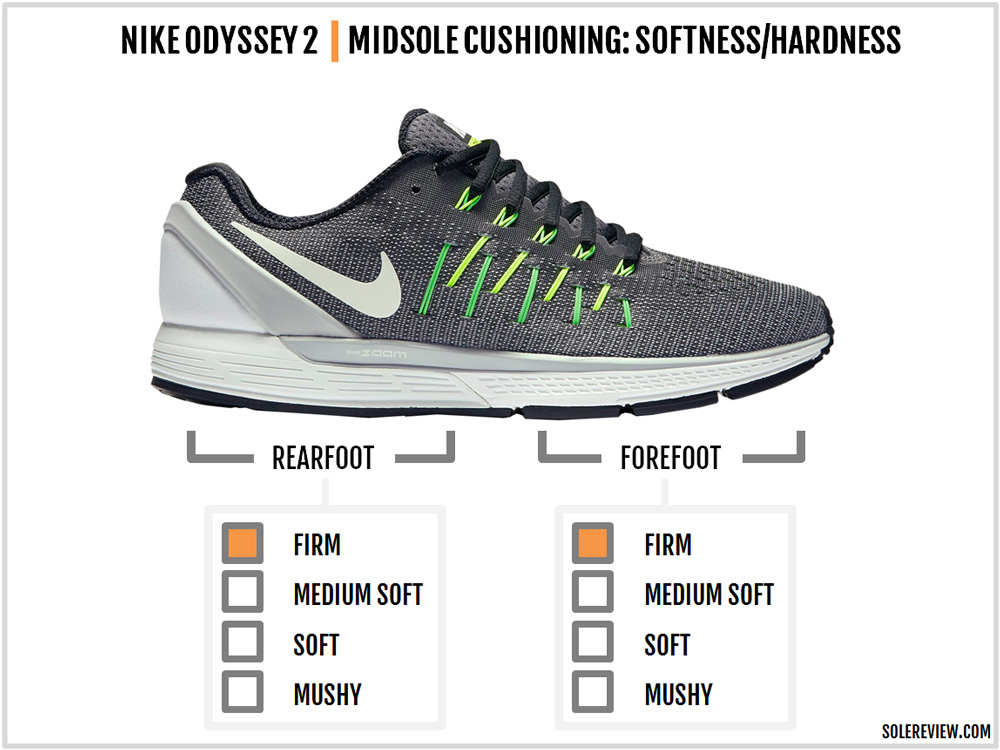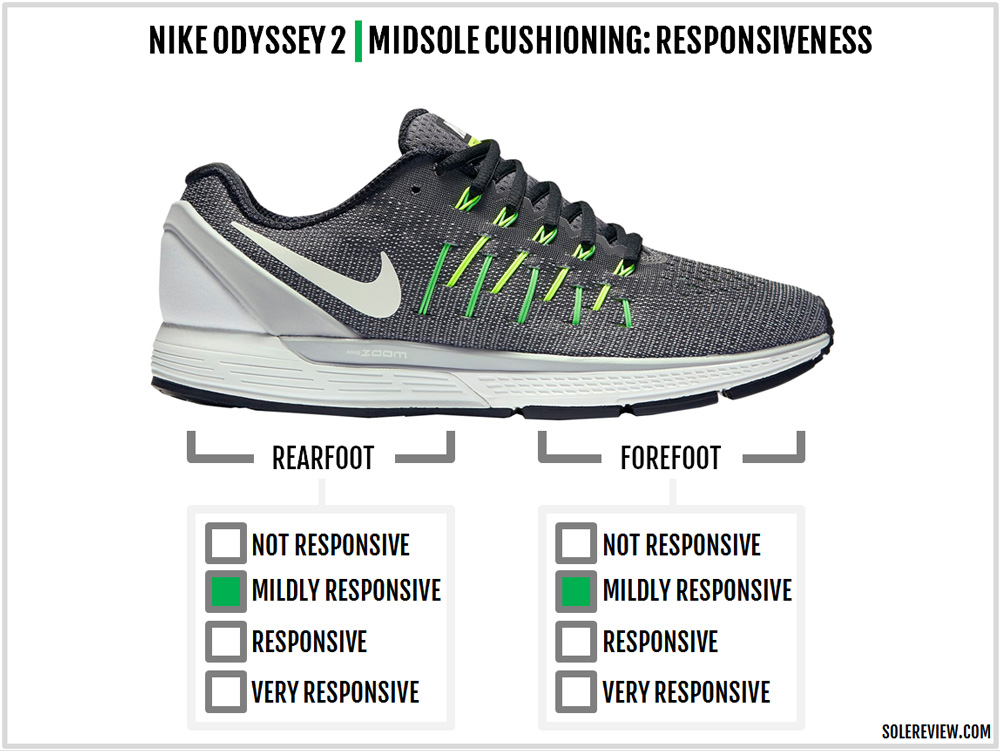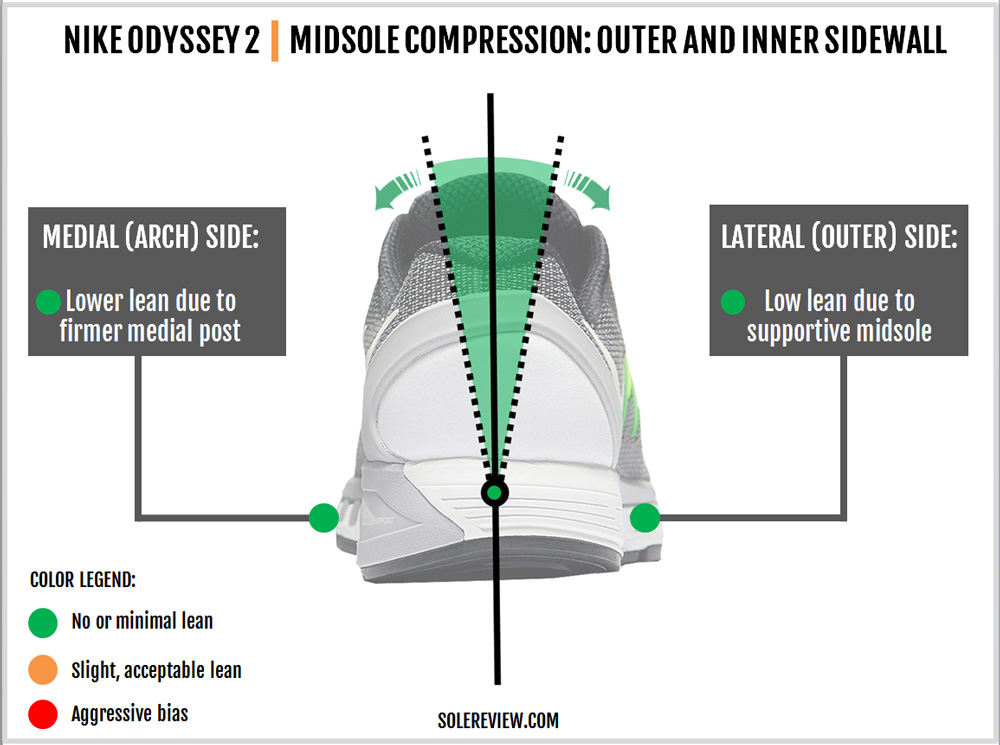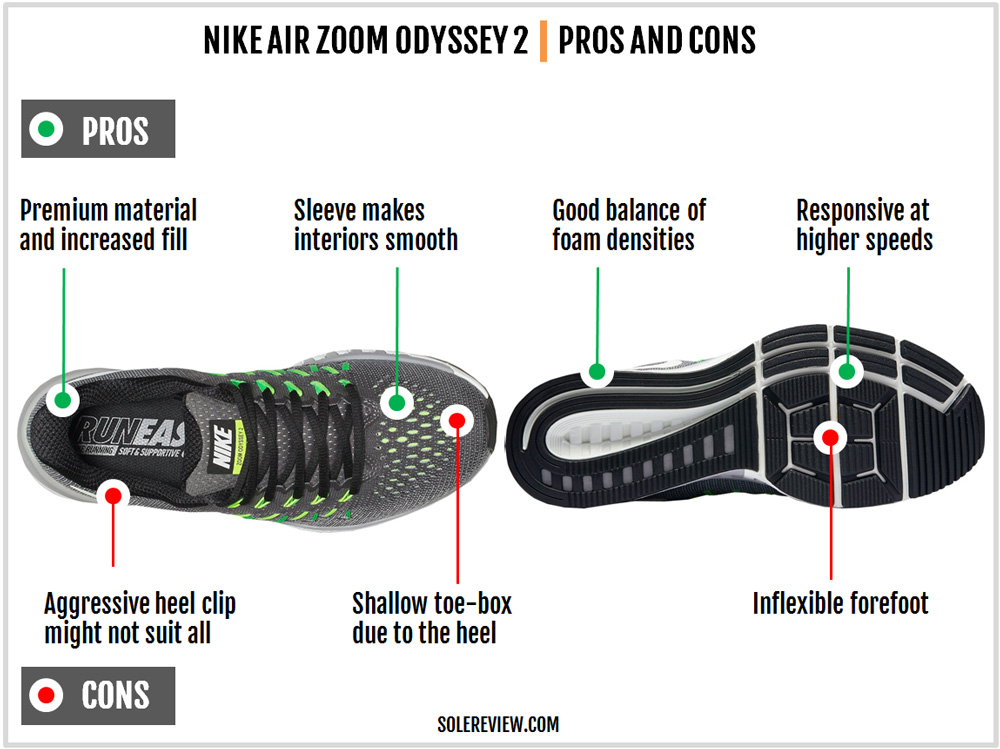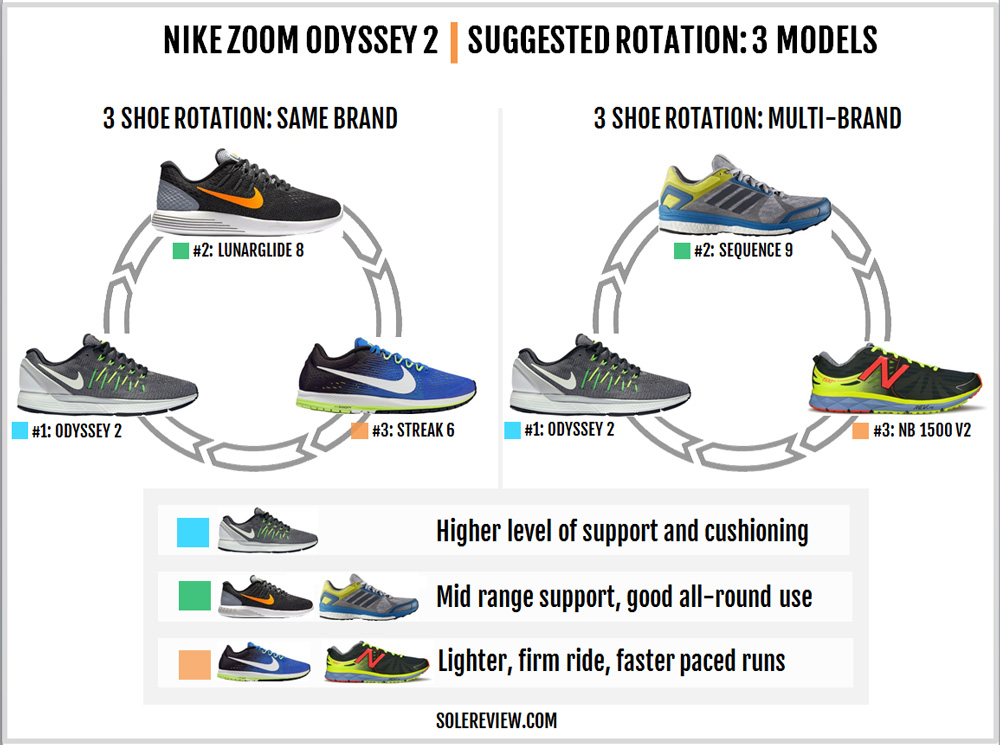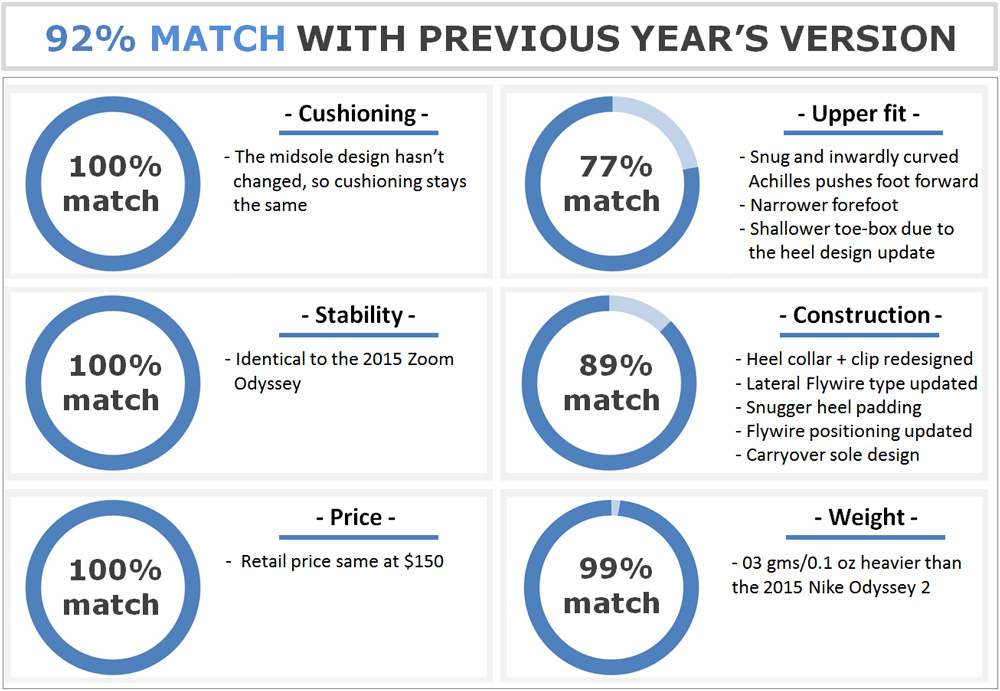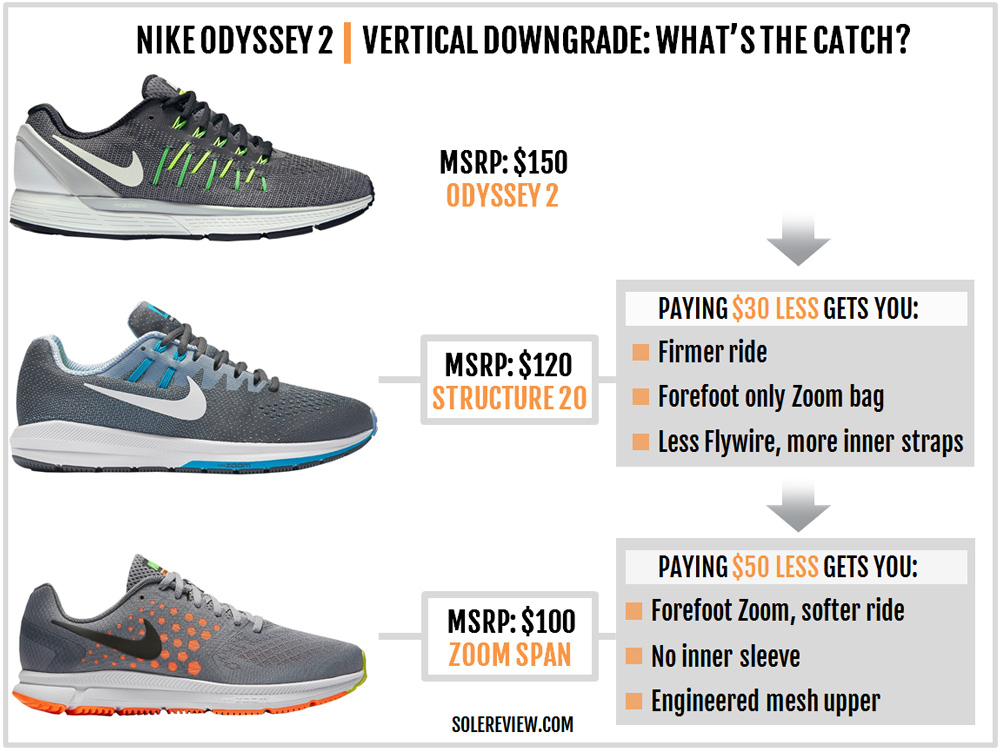INTRODUCTION
The 2016 Nike Zoom Odyssey 2 is the direct successor to the 2015 Odyssey, a product which was positioned above the Zoom Structure and the Lunarglide within the support category. On paper, it appeared that the Odyssey was a replacement for both the Lunareclipse and the long-gone Equalon, two of Nike’s premium stability/support models.
In the real world, things work differently. The Odyssey was a brand new shoe, and had little in common with the Lunareclipse or the vintage Equalon. Its ride and fit quality had more in common with contemporary versions of the Structure and Vomero than any legacy Nike model.
The last year’s review described the Odyssey to be the spawn of the Vomero 10 and the Structure 19. Also included was a long rant on the history of stability shoes and its irrelevance today. We’re not going to re-visit any of that, so head over to the Odyssey review to read more if you’re interested.
Unlike the Lunareclipse and the Equalon, the Odyssey had a firm ride, which was the doing of the dual Zoom Air bags and the triple-density foam midsole. The upper was relatively minimal for the price but not out of line with what’s trending nowadays.
The Odyssey 2 looks nearly identical to the first version, but isn’t without its changes. The updated heel counter and reworked Flywire loops impact the upper fit quality, making it narrower in the forefoot.
For a change, a Nike shoe ends up being the firmest in its category. The $150 – 160 stability price-band has long been the bastion of incumbents such as the Asics Kayano, Brooks Adrenaline GTS 16, New Balance 1260 and the Saucony Hurricane. Newer introductions like the adidas Ultra Boost ST and Mizuno Paradox have also contributed by adding ride and fit variety to the mix.
You shouldn’t get the Odyssey if you prefer a soft ride. In that case, you’re better off with the Ultra Boost ST (soft and responsive) or the Kayano 23 (soft). It’s also worth underscoring that the Odyssey has a balanced ride, with minimal motion control behavior.
By that, we mean that the harder medial post isn’t very noticeable. The lateral (outer) midsole also has a firm foam, so there’s none of that motion control lean over the heel. In contrast, shoes such as the Asics Kayano 23 have that motion control quality. The latter isn’t necessarily an evil thing unless there is too much of it.
It depends on what you want the shoe in this category to do for you. Some runners simply like the idea of a medial side support, made noticeable by a softer lateral side.
The Nike Structure 20 is also an option if you’re ok with a forefoot-only Zoom and a firmer ride.
DESIGN AND MATERIALS
Judging by first appearances, the Odyssey 2 appears to be the mirror image of the Odyssey 1. The upper uses the single piece ‘Flymesh,’ a type of engineered mesh which Nike uses on most of their running line.
The Flymesh is paired up with a Flywire assisted lacing, and there’s an external plastic clip wrapping the heel. But look closely, and changes become obvious.
Though the Odyssey 2 uses Flywire, note that the flat straps used on the Odyssey 1’s outer side are replaced by double loops. On the medial side, the Odyssey 2 continues to use the flat Flywire design. This approach is similar to the medially biased Flywire design seen on models such as the Nike Structure 18 and 19.
Not only that, the placement of the Flywire cords has changed on either side. The Odyssey 1’s loops were aligned near-vertically with the eyelets; on the Odyssey 2, the Flywire cords splay out at a wider angle. This matters most near the forefoot, where the Flywire cord angles towards the front. This applies to both the medial and lateral sides.
The role of Flywire in impacting the upper fit quality is minimal though; what matters more is the update made to the heel area. The Odyssey 2’s clip is much longer on the both sides of the heel. And it is higher too, which causes the Achilles dip to lean inwards. And as if on cue, the increase in collar padding puts greater distance between the heel clip and the foot.
Among other updates, the heel collar and tongue lining material are new. The Odyssey 2 gets the last heel-lock eyelet which was missing on the Odyssey 1 . Which is an irony, because the Odyssey 1 and its slimmer collar padding needed the eyelet more than the Odyssey 2’s generously foam filled collar.
The Odyssey 2’s midsole is exactly the same as the 2015 version, using a triple-density foam combination. On the inner side, there’s the ultra-long hard wedge interlocked with the main midsole, and there are two separate foam pieces for the rearfoot and forefoot.
Concealed from sight are two Zoom Air bags – one each for the rearfoot and forefoot. This is one extra over both the cheaper Structure 20 and the Span’s forefoot-only Zoom bag.
The Odyssey’s outsole is modeled on the Vomero 10. The front is covered with softer slabs of blown rubber, and the rear has a harder rubber section. The outer side has a ‘crash’ rail design, a heel-to-toe twin strip of rubber which is meant for smoother transitions. Though the blown rubber adds some softness under the forefoot, the Odyssey’s midsole is very firm.
The removable insole remains the only source of softness. No change from the last year as far as the insole is concerned; it has a blown foam base topped with a fabric lining.
There are plenty of flex grooves under the forefoot, as if to compensate for the Zoom Air bag’s firmness inside the midsole. But the Zoom Air bag wins over the grooves, so the forefoot is ultra stiff and resistant to bending.
Traction is great on the Odyssey, with the ribbed forefoot slabs providing above-average stickiness over dry surfaces.
400 miles is the Odyssey 2’s estimated median life. The heel outsole is ultra durable, and the soft forefoot’s longevity isn’t bad either.
The robust upper construction will withstand pre-mature wear and tear. Areas like the heel lining and the upper collar edges will usually degrade over an extended period of ownership.
UPPER FIT AND FEEL
The Odyssey 2 would have fit exactly the same as the v1 if it weren’t for the redesigned heel counter and the reconfigured Flywire straps. But that’s wishful thinking; the major changes around the heel affects the fit in multiple ways.
To begin with, the external plastic clip is taller. Its highest point is closer to the Achilles dip than the Odyssey 1, and this change leads to two things. The Achilles dip curves inwards over the foot, and there’s more foam packed inside the lining. Needless to say, the collar has a better grip than the Odyssey 1.
As a result of the reworked heel, the foot moves slightly forward inside the shoe towards the front. When that happens, the toe-box feels shallower than the Odyssey 1. Not that the toe-box dimensions have changed; the new heel just pushes the foot further into the toe-box.
The midfoot fit is secure. The inner sleeve does an excellent job of wrapping around the foot, and the padded tongue filters the lacing pressure well. And does changing the outer side Flywire to double cords make a difference? Yes, it does.
We noted in our Odyssey 1 review that the flat Flywire straps were an improvement over the round ones. They lay flush against the upper, as opposed to the highly strung implementation of the round cords.
Since the Flywire design on the Odyssey 2’s inner and outer upper differs, the inner side has a smoother fit quality than the outer side. For whatever our advice is worth, Nike should go back to the Odyssey 1’s flat Flywire design.
Or better still, drop the over-hyped Flywire cords altogether for an inner strap based system like the Structure 20.
The heel clip on the Odyssey 1 is reminiscent of the Lunarglide 6 and the Lunareclipse. The plastic end(s) extend further towards the midfoot and hold the heel in a vice-like grip. The revised heel clip might be an issue over longer distances, as the edges will apply more pressure than the shorter clip used on the Odyssey 1.
The forefoot fit turns slightly narrower due to two factors. Firstly, the heel pushes the foot forward towards the narrower end, so the forefoot feels tighter without actually being so.
This also affects the sizing. The Odyssey 2 runs a bit smaller than the Odyssey 1. Some runners might have to go a half size up vs. the Odyssey 1.
The Flywire cords splay out wide under the first eyelet, and part of that spills over to the forefoot. This is something which the Odyssey 1 did not do.
We’ve repeatedly seen this play out across brands. Change the heel fit, and the forefoot fit changes. Designers need to account for any updates they make to the heel area and assess its potential impact on the overall fit quality.
Otherwise, it’s a huge waste of time and resources. Consumers expect a similar fit based on the previous shoe, and then they find the sizing or fit different. Shoes are returned and re-shipped, which isn’t good for anybody involved.
RIDE QUALITY AND BEHAVIOR
Regardless of what Nike marketing claims, the Odyssey 2 is not a soft shoe. The only squish is produced by the sockliner; the rest of the midsole is a firm place. And what of the Zoom Air bags? Doesn’t the Odyssey have two of them packed in somewhere?
Yes, there are dual Zoom Air bags. However, in their inert condition they are very firm. Even when pressure is applied briefly, they bounce back very quickly. Also, the Zoom Air bag experience is heightened with softer foam surroundings. In contrast, the midsole around the Odyssey’s Zoom bags is firm.
The forefoot’s soft blown rubber outsole produces some softness at the bottom. But considering how thin the forefoot is (15 mm here), cushioning softness doesn’t have a lot going for it.
Responsive the Odyssey is, but only at higher speeds. The tightly sprung Zoom Air bags – which is basically air captured inside a drop-stitched urethane chamber – deliver a spring-back action at increased speeds.
At walking or slower paces, the effect isn’t perceptible. Agreed, on shoes such as the Vomero 11 the Zoom Air bags appear to work effectively even at walking speeds, but remember that the foam around the Zoom bag is far softer than on the Odyssey. That arrangement allows Zoom Air to work with relative freedom.
The Odyssey 1 did not exhibit aggressive motion control behavior, and nor does the Odyssey 2. The inner and outer midsole foam densities are well matched in firmness, so there’s no outward leaning of the rearfoot. The medial post has a subdued feel, unlike some shoes where you can distinctly sense the harder half of the midsole.
When coupled with the Zoom Air bags, the firm nature of the midsole foam help in quick transitions. So if you felt some other support shoes to be soft and lazy, then the Odyssey is a suitable shoe for faster workouts. Areas like the rigid forefoot might not flex a lot, but in return helps achieve quicker toe-offs.
PROS AND CONS
The Zoom Air bags embedded under the heel and forefoot make the Odyssey 2’s ride responsive at higher speeds. The midsole goes a great job of balancing the softer and firmer foam sections without resulting in an outwards rearfoot lean.
Inside the upper, Nike’s tried-and-tested inner sleeve construction eliminates seams to create a smooth interior environment. The heel, midfoot and forefoot grips and supports the foot well.
Some runners might not like the oversized heel clip, which extends longer in the direction of the midfoot. We saw this on prior versions of the Lunarglide, where the plastic was felt on the medial side when running longer distances.
The Odyssey 2 completely lacks reflectivity, which is a surprising omission for a shoe which costs $150. And why no optional widths, Nike?
RECOMMENDED ROTATION
If you buy the Structure 20, you’ll discover that it isn’t all that different from the Odyssey. So from a rotational perspective, the Lunarglide 8 makes better, and logical sense.
The LG8 has a different, yet a supportive ride quality, and the additional softness will add variety to your runs. Do keep in mind that the outsole durability isn’t on par with the Odyssey, so you’ll have to manage your mileage spread accordingly.
There isn’t a Nike equivalent for the adidas Tempo Boost, the Asics DS Trainer or the New Balance 1500, all of which are medially posted speed shoes. So you’ll have to make do with either Zoom Streak 6 or the Lunartempo 2.
The adidas Sequence 9 is an excellent companion to the Odyssey. Like the Nike model, the Sequence has a firm ride with responsiveness available at higher speeds.
And needless to say, the superlative New Balance 1500 V2 is the shoe to buy if you’re after a supportive speed shoe. It has a medial post, but it is barely noticeable.
SUMMARY
The lower half of the Odyssey 2 stays the same, so there’s no change in the cushioning or stability character. The weight hasn’t changed either.
Nearly all fit changes are directly co-related to the redesigned heel. The forward angled Achilles pushes the foot forward to result in a paucity of forefoot and toe-box space. That, and the redesigned splaying of the Flywire loops which affect the forefoot fit.
Nike offers three medial-posted stability models between the $100 and $150 (including the Odyssey) so that you can pick and choose. If you are not in the mood to spend $150, then the $120 Structure 20 is a good alternative. You won’t miss much; besides, the Odyssey’s heel Zoom isn’t as effective as the forefoot.
The newly reintroduced Air Zoom Span offers a softer ride and forefoot-only Zoom Air. The inner midsole includes a firmer medial post, but of a much smaller kind which has little effect on the overall ride.

